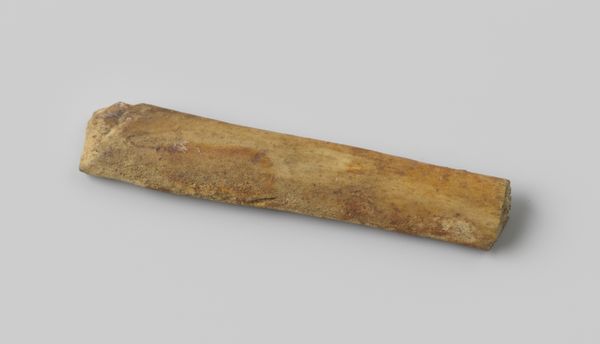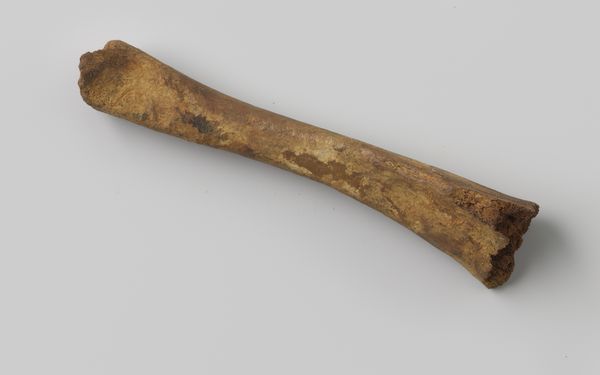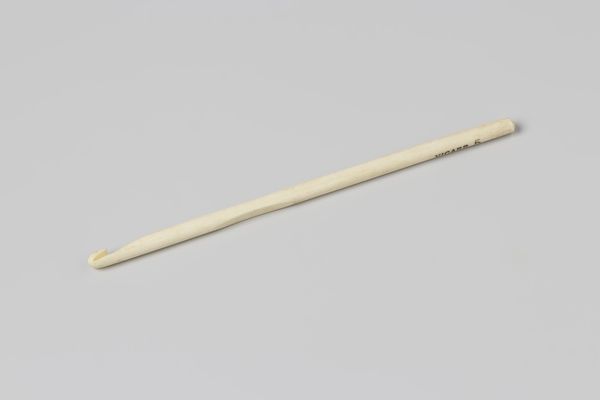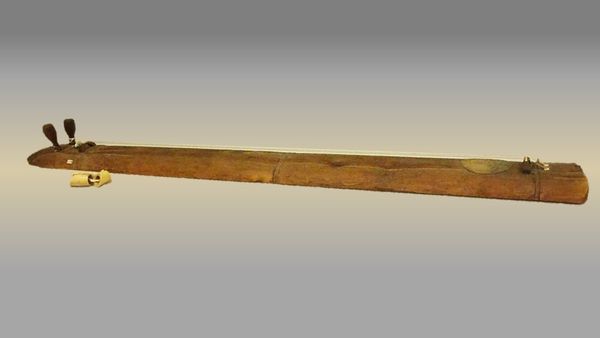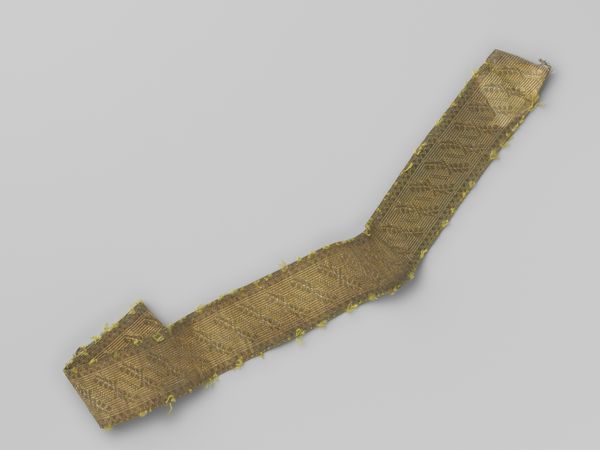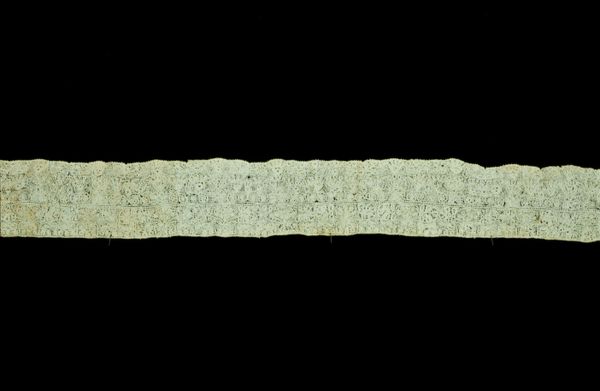
Scheenbeen van schaap of geit uit het wrak van de Oost-Indiëvaarder Hollandia before 1748
0:00
0:00
found-object, sculpture
#
dutch-golden-age
#
found-object
#
sculpture
Dimensions: length 16.2 cm, width 2 cm, depth 1.7 cm
Copyright: Rijks Museum: Open Domain
Curator: So haunting. I see this solitary object, so fragile after centuries underwater, and it whispers stories of unimaginable journeys. Editor: What an object—a humble tibia, the shin bone of a sheep or goat, salvaged from the wreckage of the Dutch East Indiaman Hollandia. The vessel met its end before 1748. Found objects have a powerful resonance, wouldn't you say? It evokes something primal, like uncovering a long-lost memory. Curator: Absolutely. Considering its origins in the belly of a doomed ship, this unassuming piece demands that we examine the intricate network of colonial trade and its impact on human lives, both the colonizers and colonized. What were the conditions on these ships? Whose labor paid for them? How were these animals transported? I believe this single bone opens many lines of inquiry related to ethics and power. Editor: That makes me think about its fragility. After centuries on the seabed, it looks like it might crumble if I touched it. But I bet if this bone could speak, it would have incredible stories to tell. Who gnawed on it, I wonder, rat or hungry sailor? Or maybe a lonely cook used it to practice whittling? Ha! It feels like I'm looking at the humblest of witnesses. Curator: Indeed. Its presence here, in the Rijksmuseum, transforms this humble object. Once discarded, or perhaps destined for sustenance, it now carries weight far beyond its physical form, demanding conversations about class, exploitation, and environmental impact in connection to Dutch Golden Age trade networks. Editor: I keep thinking about how such a small, commonplace thing could become art simply by surviving. Isn't that absurd and beautiful at the same time? It wasn't carved, it wasn't painted; it simply endured, and its story grew larger with each passing year. Curator: Survival, it is frequently contextualized as resistance. And if we examine what its mere survival allows us to question and reflect, well, I'm not sure the Dutch East India Company ever imagined that a single bone could still pose so many powerful, and socially relevant, questions! Editor: Absolutely. After seeing the bone, I want to hug my dog and be kinder to strangers.
Comments
No comments
Be the first to comment and join the conversation on the ultimate creative platform.
